Terraforming Mars: Scientific Strategies for Creating a Habitable Planet
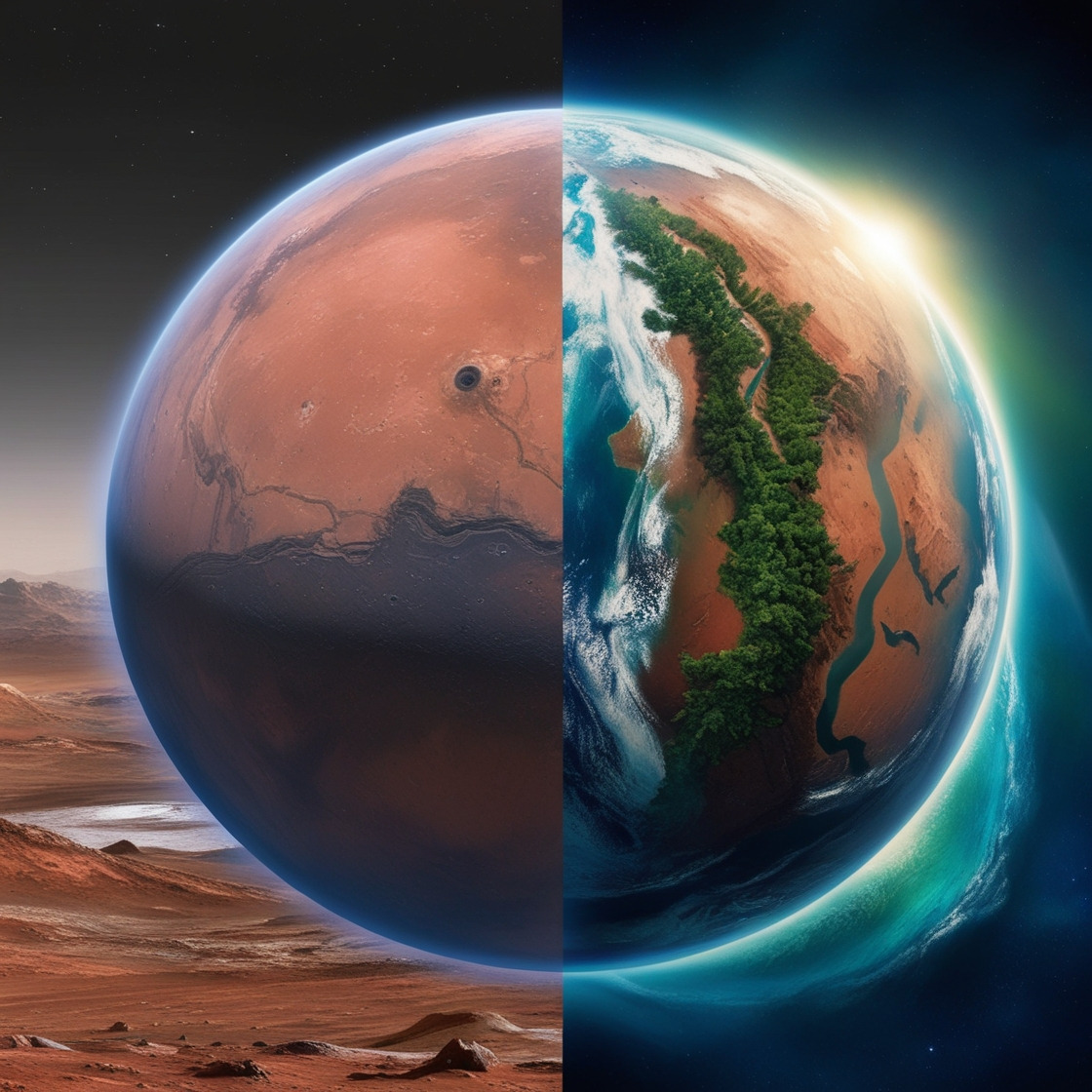
Terraforming Mars—the process of transforming the Red Planet into a habitable world—has long captivated the imaginations of scientists, engineers, and futurists alike. As Earth faces increasing environmental challenges and population pressures, the prospect of expanding human civilization to Mars presents an intriguing, albeit formidable, opportunity. The idea is to alter Mars’s atmosphere, temperature, and ecology to create conditions that could support human life. This concept, however, requires not only advanced scientific understanding but also the development of groundbreaking technologies. The question remains: Can Mars, a cold, arid, and inhospitable planet, be transformed into a new Earth?
Why Terraform Mars?
Mars is considered one of the most viable candidates for terraforming within our solar system. Its relative proximity to Earth and the presence of water in the form of ice make it a compelling target for human colonization. Mars also shares several key characteristics with Earth, such as day length, polar ice caps, and seasonal changes. These similarities provide a foundation upon which we might build a habitable environment. Terraforming Mars is not merely an academic exercise; it represents a potential solution to ensuring the long-term survival of the human species. By transforming Mars into a livable world, humanity could establish a backup civilization, safeguarding against catastrophic events that might threaten life on Earth.
The Scientific Basis for Terraforming Mars
Before delving into the methods of terraforming, it is essential to understand the current conditions on Mars. The planet’s atmosphere is composed mainly of carbon dioxide (CO2), with traces of nitrogen and argon. The atmospheric pressure on Mars is less than 1% of that on Earth, and its surface temperature averages around -80 degrees Fahrenheit (-62 degrees Celsius). Additionally, Mars lacks a global magnetic field, which on Earth protects the atmosphere from being stripped away by solar wind. These harsh conditions make it impossible for humans to survive on Mars without significant intervention.
Atmospheric Enhancement
One of the first steps in terraforming Mars involves thickening its atmosphere. A thicker atmosphere would increase surface pressure, allowing for the retention of heat and the potential for liquid water to exist on the surface. Scientists have proposed several methods to achieve this goal.
1- Releasing Greenhouse Gases

Lorem ipsum dolor sit amet, consectetur adipiscing elit. Ut elit tellus, luctus nec ullamcorper mattis, pulvinar dapibus leo.
One approach is to release greenhouse gases, such as CO2, methane (CH4), and water vapor, into the Martian atmosphere. These gases would trap heat from the Sun, creating a greenhouse effect that could gradually warm the planet. The release of CO2 could be achieved by tapping into the planet’s existing reserves. Mars’s polar ice caps contain vast amounts of CO2 frozen as dry ice. By employing methods such as detonating nuclear devices or using large mirrors to focus sunlight, the ice caps could be sublimated, releasing CO2 into the atmosphere.
Methane could be produced by introducing methanogenic microorganisms, which generate methane as a byproduct of their metabolic processes. These microorganisms could be engineered to thrive in Martian conditions, contributing to the greenhouse effect. Another possibility is the importation of greenhouse gases from other celestial bodies, although this would require significant advancements in space logistics and transportation.
2- Introducing Oxygen
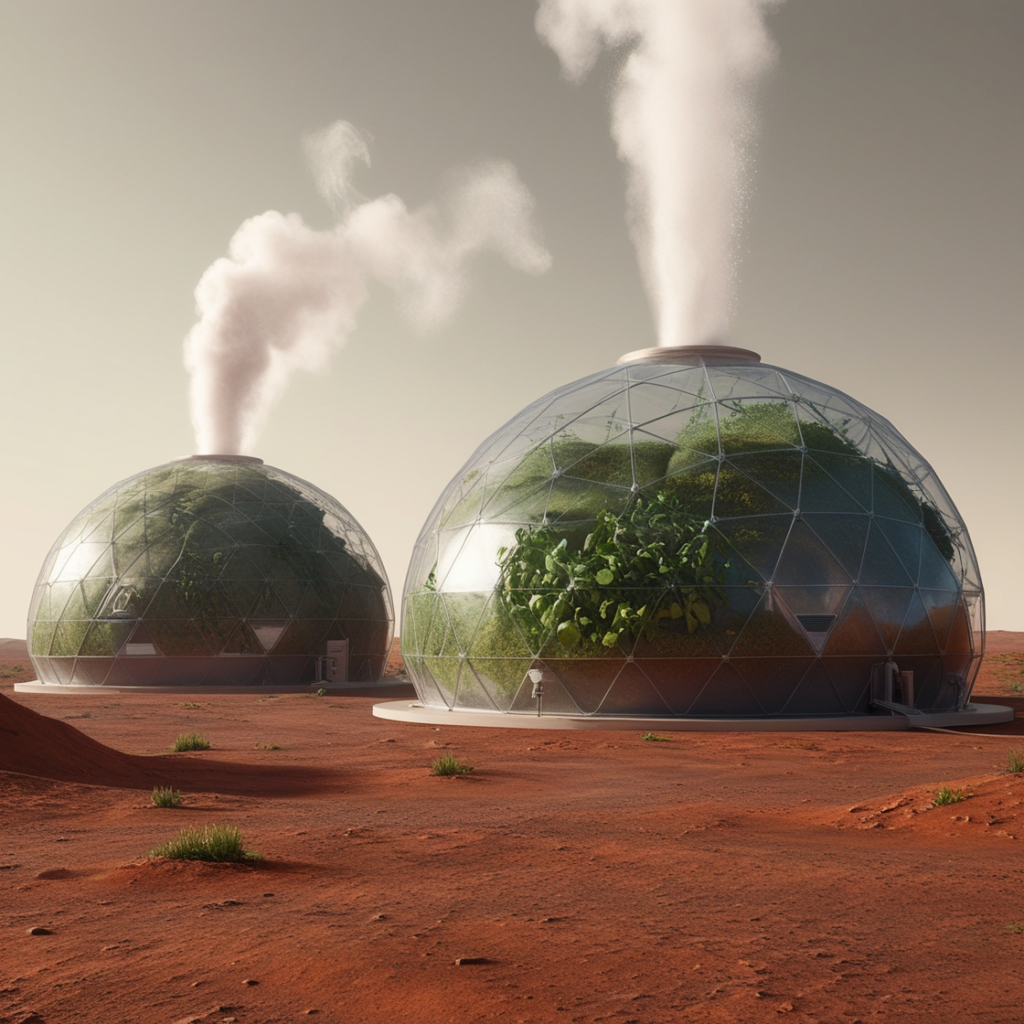
For Mars to support human life, its atmosphere must contain oxygen. On Earth, oxygen is produced primarily through photosynthesis, a process carried out by plants, algae, and cyanobacteria. To replicate this on Mars, scientists propose introducing genetically engineered microorganisms that can survive in Martian conditions and convert CO2 into oxygen. Over time, as these microorganisms proliferate, they could produce enough oxygen to make the atmosphere breathable for humans.
Another approach involves the use of electrolysis, a process that splits water into hydrogen and oxygen using electricity. By extracting water from Martian ice and subjecting it to electrolysis, oxygen could be produced and released into the atmosphere. However, this method would require a significant and sustainable energy source.
Warming the Planet
Mars’s frigid temperatures pose a major obstacle to habitability. To create a more temperate climate, the planet must be warmed. Several strategies have been proposed to achieve this goal.
1- Greenhouse Effect

As mentioned earlier, the release of greenhouse gases is a key component of warming Mars. The greenhouse effect would raise surface temperatures, potentially allowing for liquid water to exist. The extent of warming required is substantial, with estimates suggesting that temperatures would need to rise by about 60 degrees Fahrenheit (33 degrees Celsius) to create Earth-like conditions.
1- Melting Polar Ice Caps
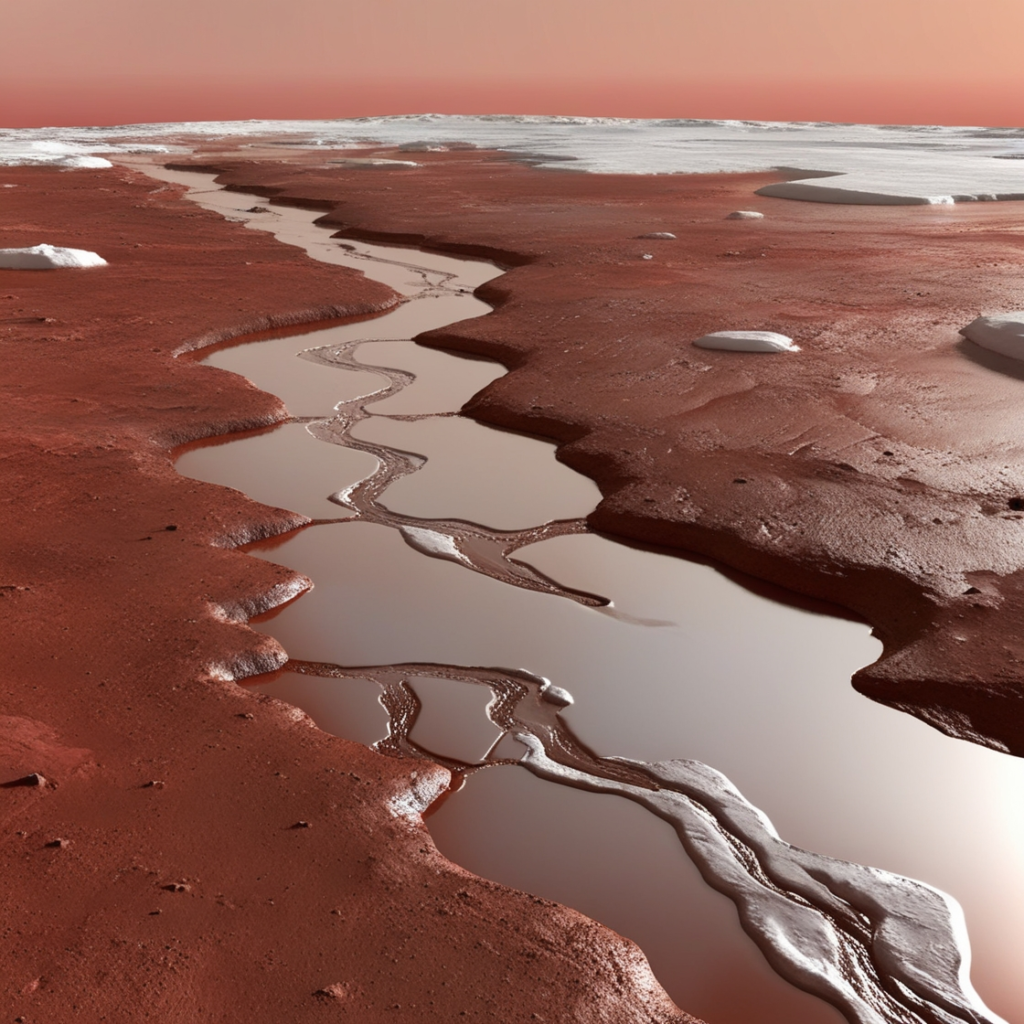
The polar ice caps on Mars are composed of water ice and CO2 ice. Melting these ice caps would not only release CO2 into the atmosphere but also provide liquid water, a crucial element for sustaining life. The melting process could be accelerated by deploying large mirrors in orbit around Mars. These mirrors would reflect and concentrate sunlight onto the poles, raising temperatures and causing the ice to melt. Another method involves the use of black carbon dust, which could be spread over the ice caps to absorb more heat from the Sun.
Creating a Magnetic Field
One of the greatest challenges in terraforming Mars is the absence of a global magnetic field. Earth’s magnetic field protects our atmosphere from being eroded by solar wind, a stream of charged particles emitted by the Sun. Without a magnetic field, any atmosphere created on Mars would be gradually stripped away, undoing the efforts to terraform the planet.
Several theories have been proposed to create an artificial magnetic field on Mars. One idea involves placing a large magnetic shield at the Mars-Sun L1 Lagrange point, a location in space where the gravitational forces of Mars and the Sun are balanced. This shield would deflect solar wind, protecting Mars’s atmosphere. Another concept suggests generating a magnetic field on the planet’s surface using superconducting loops or electrostatic rings. However, these ideas remain speculative, and their feasibility is uncertain given current technological limitations.
Establishing an Ecosystem
Once Mars’s atmosphere is thickened and its temperature raised, the next step in terraforming involves establishing a self-sustaining ecosystem. This process would be gradual and require the introduction of various forms of life, from microorganisms to plants and eventually animals.
1- Microbial Life
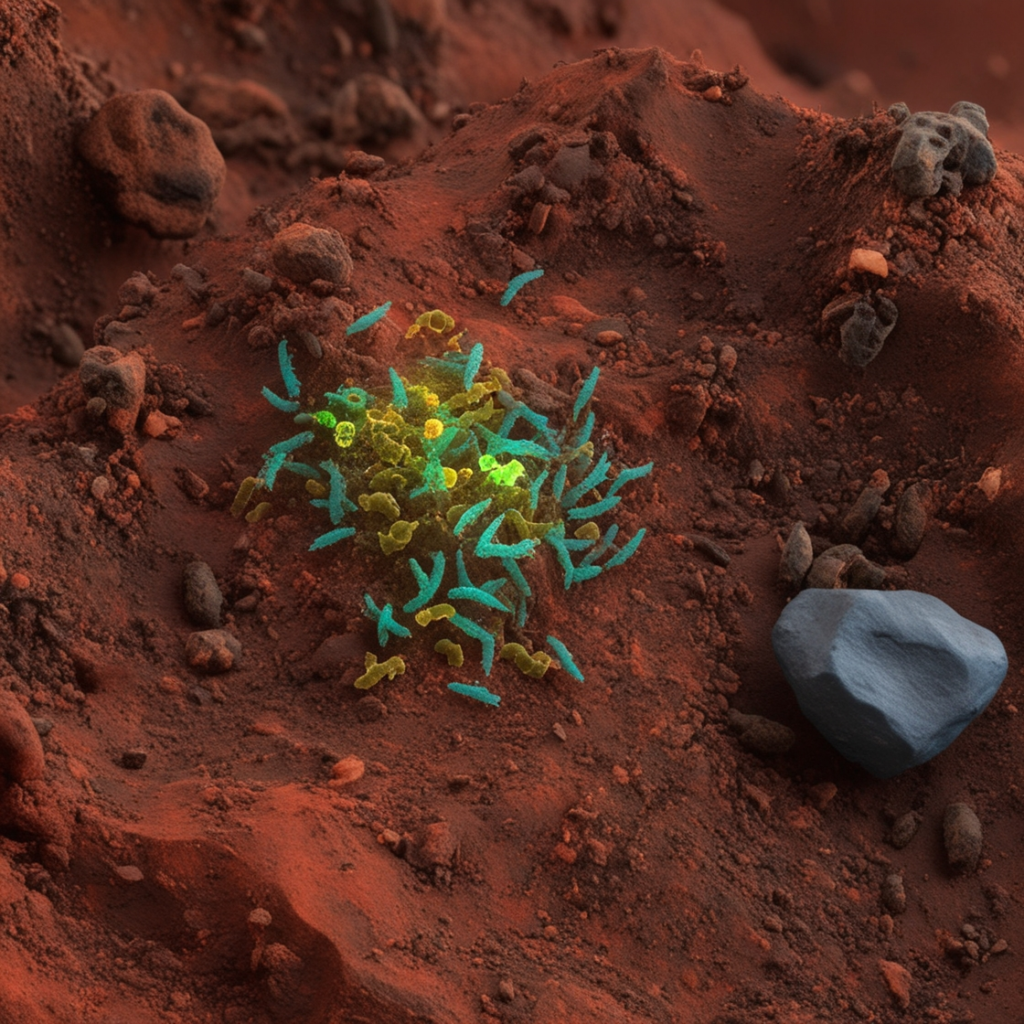
The first organisms introduced to Mars would likely be extremophiles—microorganisms that thrive in extreme conditions. These could include genetically engineered bacteria and algae capable of surviving in low temperatures, high radiation, and low oxygen environments. These microorganisms would play a crucial role in altering the Martian soil (regolith), making it more conducive to supporting plant life.
2- Plant Life
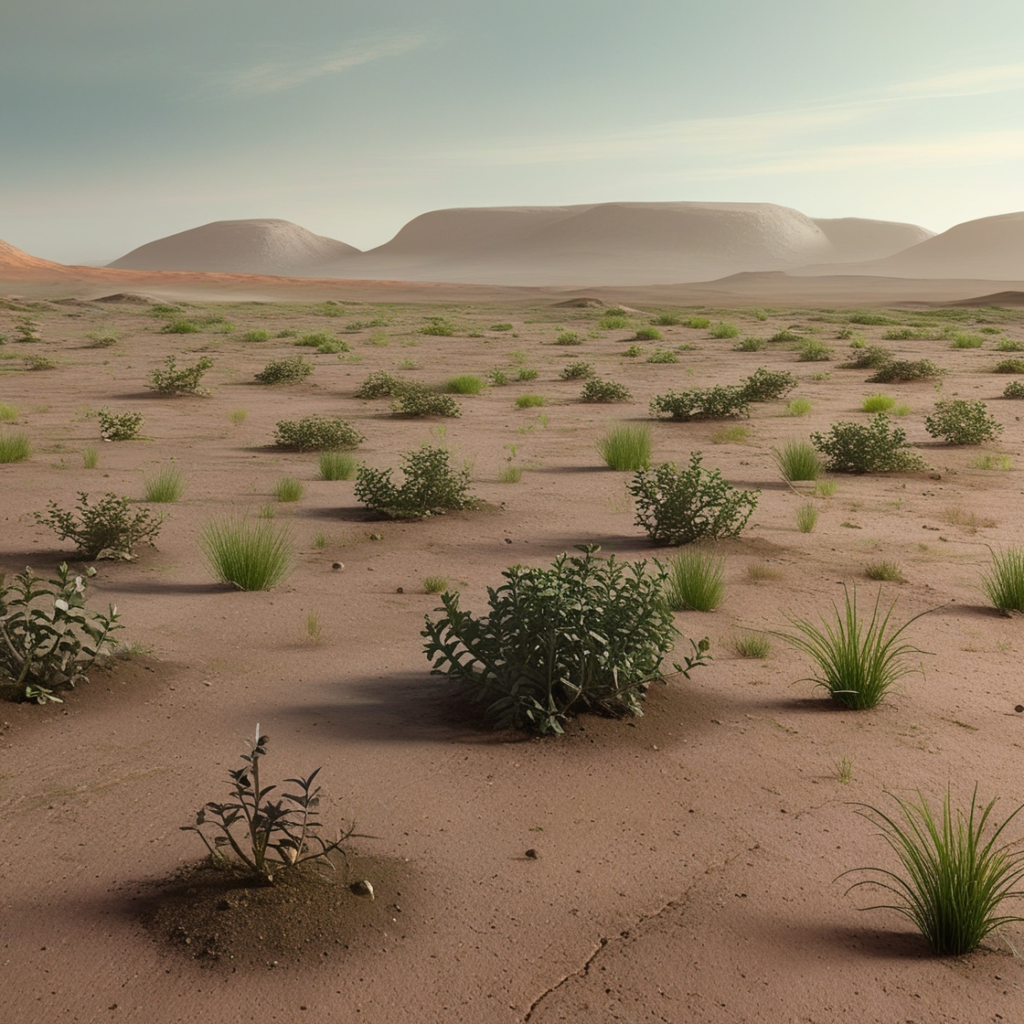
With the groundwork laid by microorganisms, the next stage involves introducing hardy plant species. These plants would need to be drought-resistant










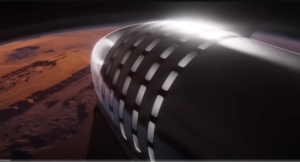


Post Comment